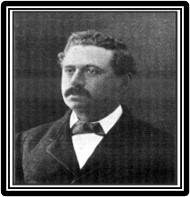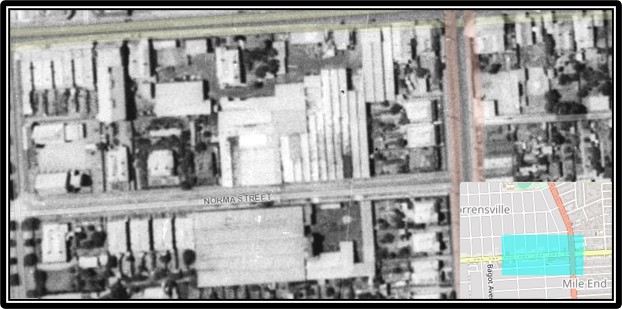The Metters Company
 Fred Metters 1905
Fred Metters 1905
[pittwateronlinenews]
Frederick Metters was born in Melbourne, Victoria, in May 1858, the eighth child of James Metters (c.1821-1881), a Cornish-born bricklayer, and his wife Susan nee Flux (c. 1824-1875) from the Isle of Wight.
By 1869 James was employed as a stove setter and Fred worked for him. In the mid-1880s Fred moved to Adelaide and worked as a clerk and then as an ironmonger’s assistant.
In April 1891, Fred Metters patented a new ‘top-fire’ wood-fuelled oven. According to the patent 'the fire is in a chamber on the top [of the oven], having sliding doors in front, and in which the draught is caused to pass down the full width of the sides, under the bottom and allowed to spread all over the back of the oven’ (The oven was similar to one being manufactured by his brothers in Victoria).
In 1893 confident of the future of the business, Metters saw the need for a substantial suburban manufacturing plant. In March, May and June 1893 he bought for £166 3 allotments totalling 0.62 acres (0.25 hectares) on the northern side of Norma Street, West Adelaide - from 1944 renamed as a part of Mile End - just west of Fisher Terrace/South Road.
 1935 Aerial View Henley Beach Road/Norma Street, west of South Road (was Fisher Terrace) [WestMaps public]
1935 Aerial View Henley Beach Road/Norma Street, west of South Road (was Fisher Terrace) [WestMaps public]
The factory’s first few months were difficult. Newspapers almost immediately noted that the factory was ‘an annoyance to several families in the vicinity’ because of issues relating to its noise, smoke, unpleasant fumes and drainage.
Residents were also concerned about declining property values and further, that ‘the workmen do all in their power to annoy a lady whose property adjoined the building’.
Metters made changes to the factory, including moving the noisiest activities to a new shed and installing an absorption well to hold some of the foul water that had previously flowed into street drains.
By late 1894 Metters had sold more than 5,000 ovens in South Australia and was advertising himself as ‘a name familiar to every SA housewife’. Eventually about 15,000 of the first-generation top fire design ovens were sold in South Australia. At this time, Metters’ main rival in South Australia was Simpson’s Ovens and Ranges.
By 1910 Metters’ West Adelaide manufacturing plant covered a total of 4.02 acres (1.63 hectares). A little more than half of the plant took up a block between Henley Beach Road and Norma Street, while the remainder of the factory was directly south on the southern side of Norma Street (the factory was sometimes advertised as the Great Central Foundry).
By this time the plant employed around 160 workers; the works manager was George Matthew.
Company growth accelerated after the formation of Metters Ltd. By 1909 the company was Australia’s largest stove manufacturer, producing around 1,100 per month, and during the next 5 years introduced a series of new oven brands including the Beacon Light, Bega, Drop Door, Regina, Royal, Sam Weller, Samson and Wilga.
During the First World War, Metters’ production shifted almost exclusively to the manufacture of heavy duty cooking equipment for use by the armed services. Net company profits nonetheless remained consistent at around £17,000 - £20,000.
Metters Ltd had first ventured into the vitreous (or porcelain) enamelling of cast iron baths and sinks in about 1908.
By April 1926, Metters employed 250 workers at its Mile End plant, where it specialised in stoves, windmills and spray pumps. William Correll had taken over from Lewis H. Parker as works manager in 1925 and held the position for the next 20 years. Metters Ltd employed around 1,550 workers nationwide.
An Adelaide-based holding company, General Industries Limited (GIL), was formed with Spring as chairman of directors and managing director and with authorised capital of £2,000,000.
The new company first employed about 3,000 workers nationally and advertised itself as ‘the largest manufacturer of its class in the southern hemisphere’.
Metters was the dominant partner in the relationship, consistently earning around three-quarters or more of the company’s net profits.
In January 1934 Metters was, with paid up capital of £622,170, the eighth largest company in South Australia (behind Elder Smith and Co with paid up capital of £2.399 million).
An oddity of Metters’ Adelaide operations in the 1930s was that its workers did not receive wages through conventional means - for example by cheque or in a pay packet - their wages were paid to them by coins placed in metal cups. Why this was done remains a mystery.
Although still manufacturing a limited range of appliances for the domestic market, during the Second World War Metters moved into the production of military requirements including cooking utensils, food containers and components for land mines and pontoon bridges.
After the war there was a huge and growing demand in Australia for domestic appliances and companies like Metters (and Kelvinator Australia Ltd, another West Torrens-based company) benefited significantly.
The increasing use of electric stoves from the late 1940s also helped the company.
In May 1950 the company began building a £100,000, 2.06 acre (0.83 hectare) plant at Manchester Street, Mile End South. Metters had shown significant foresight on the issue by buying land in Mile End South as early as April 1918. The site was close to the Mile End goods yards, the city and Port Road (and thereby the shipping facilities of Outer Harbour).
In 1918 Metters had bought 18.57 acres (7.51 hectares) between London Road and Manchester Street, Mile End South from the South Australian Company for £4,030.
The plant eventually opened there by Metters in May 1952 specialised in manufacturing porcelain enamel baths and basins for the South Australian and Western Australian markets. The Mile End plant, with around 470 workers, continued to operate.
 West Maps Public 1959 [West Maps Public]
West Maps Public 1959 [West Maps Public]
Not all were happy with the opening of the plant. In late 1954 press reports noted that several local families were upset by the ‘black dust’ emanating from the plant and that ‘fourteen families had been driven from their homes … one family had lived … in Manchester Street for 35 years’. Metters made changes and the problem eased.
In November 1954, Metters announced that a second plant of 1.14 acres (0.46 hectares) would be built on Manchester Street. Designed by architect Gordon C. Brown of Pirie Street, built by J.Grove and Son of Mitcham and costing around £150,000, the factory opened in early 1956 to house the electric and solid fuel cooker assembly plant then in use at the Mile End factory.
Metters’ main Adelaide production activities and head office were now situated at 7-25 Manchester Street, Mile End South (virtually the western one-third of the area between London Road and Manchester Street).
Metters’ peak Adelaide employment level occurred in the late 1950s when its Mile End and Mile End South plants employed around 550 workers in total.
Metters Sydney Trade Catalogue [sydneylivingmuseum]
In 1961 Metters, not unexpectedly, closed its Mile End factory. (The Mile End allotments were sold by the company in 1962-64 and fetched a healthy average of around £4,500 per 0.18 acre (0.7 hectare) allotment.
In Adelaide, activity at the Mile End South site was considerably reduced from 1965 when bath manufacture was transferred to Sydney (Metters had closed its Grenfell Street showroom in 1962). In the late 1960s Metters had a low rate of return on its substantial $17.2 million worth of assets.
After various takeovers the company was eventually taken over by Sweden’s Electrolux AB in November 2000.
The still-respected Metters brand name was used by Email Ltd until the mid-1980s (and many Metters windmills remain in use in rural Australia).
Although today few of the whitegoods sold in Australia are made here, Electrolux-owned stoves are an exception. The Electrolux plant at Dudley Park, Adelaide currently employs around 350 workers and manufactures a range of AEG, Chef, Electrolux and Westinghouse cooking products.
Electrolux Dudley Park assembly line [adelaideaz]